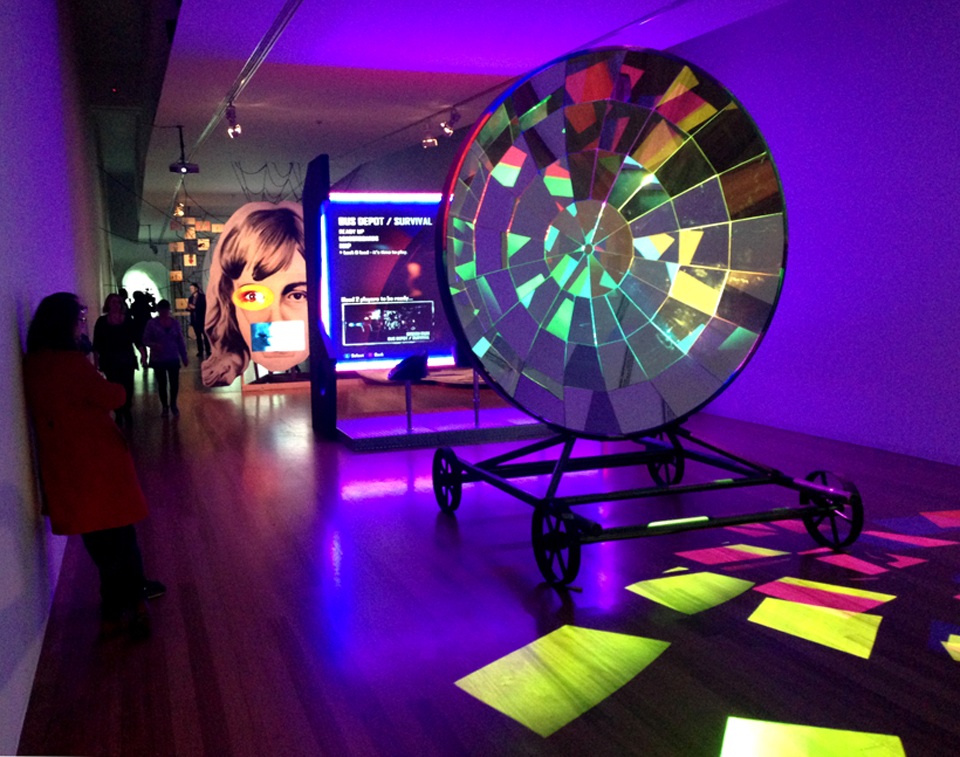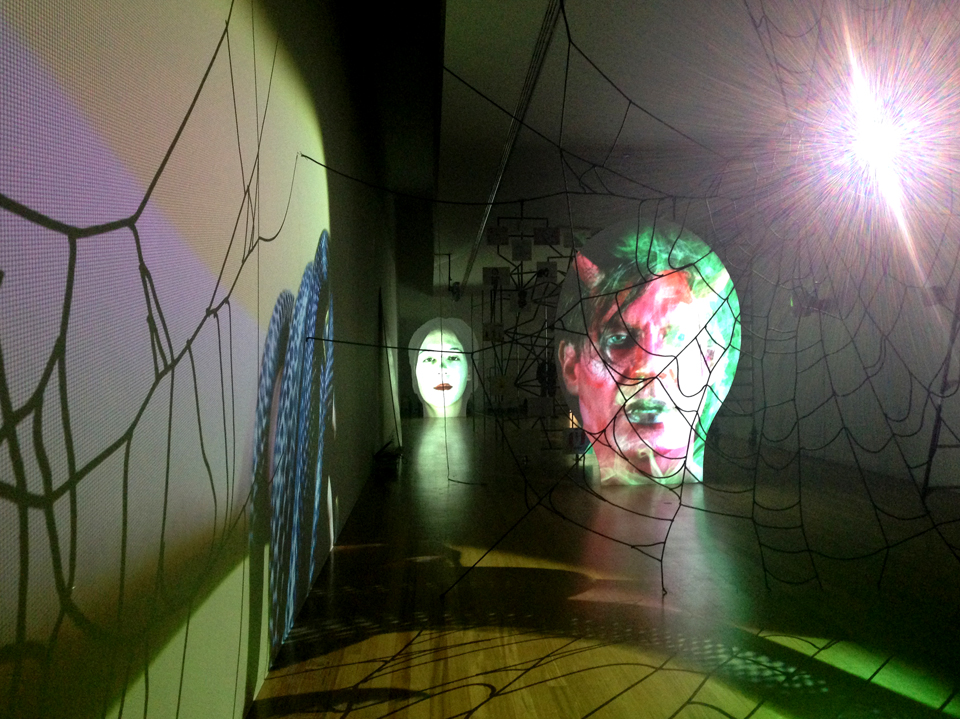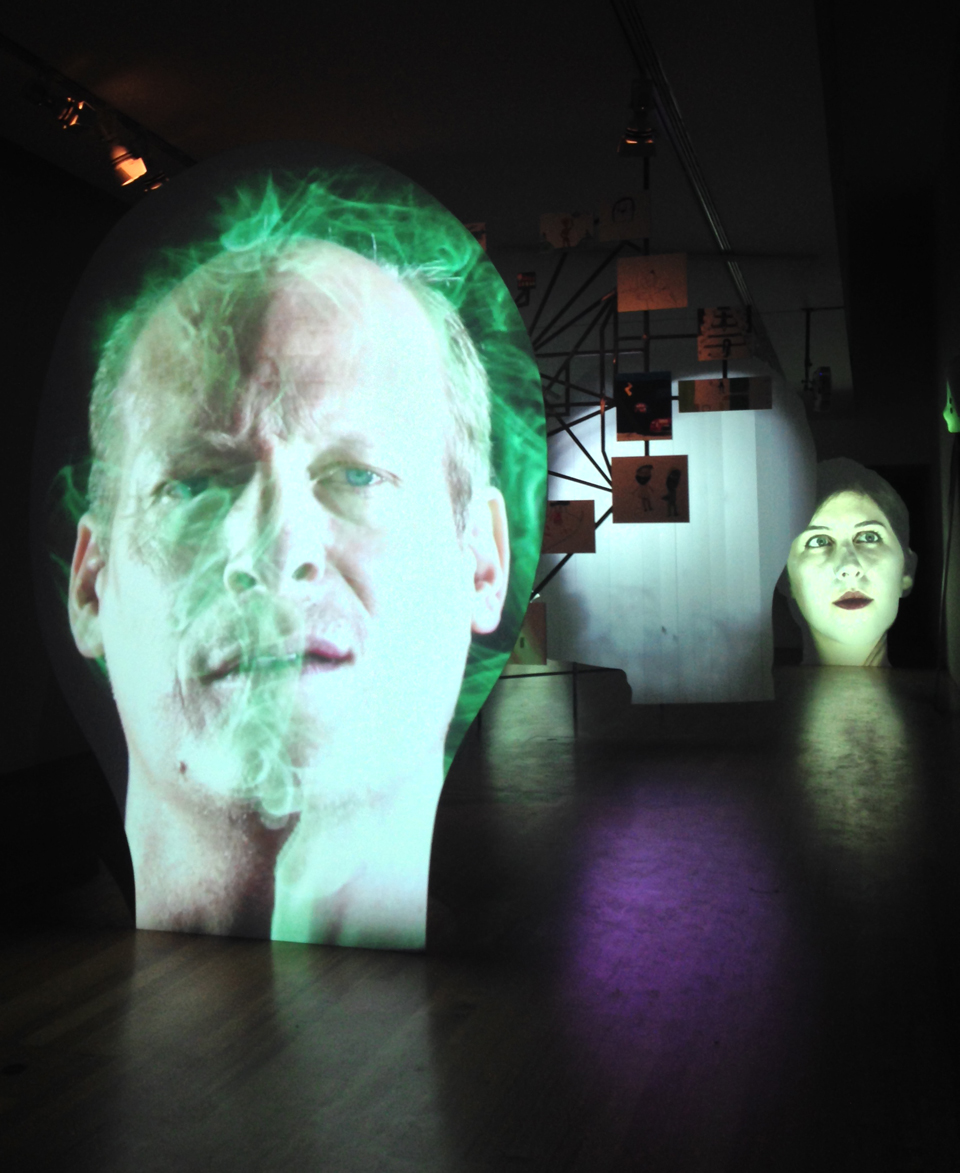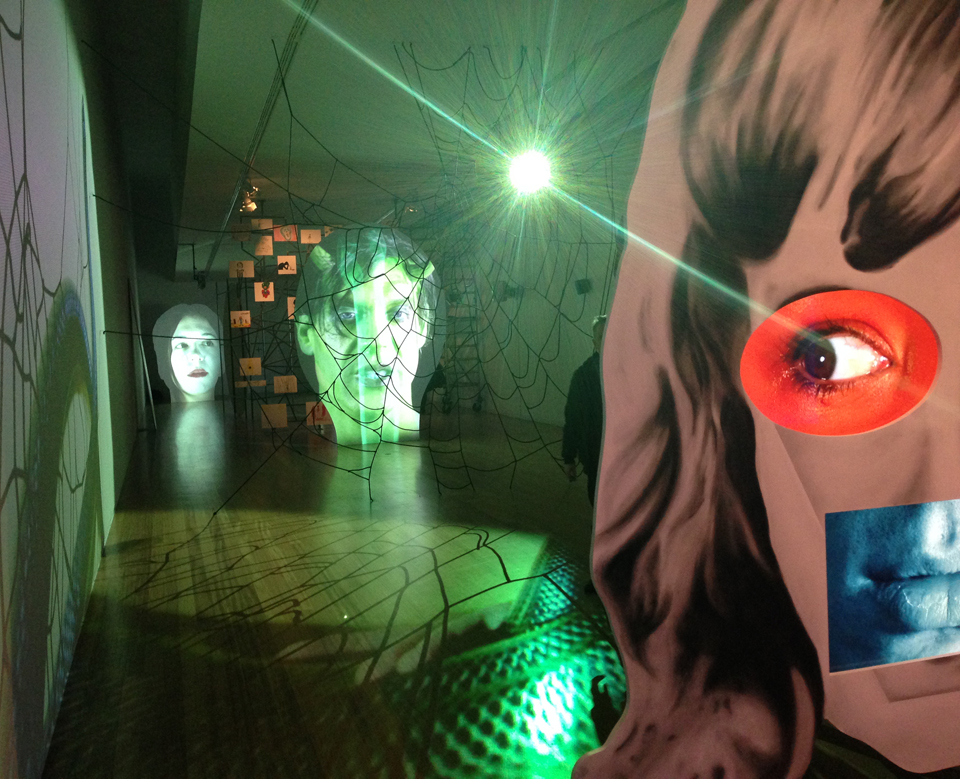Phantasmagoria
Musee des Arts Contemporains, Belgium
Nov. 16, 2013 - Feb. 23, 2014





This exhibition was specifically designed for the spaces at the MAC Grand Hornu Belgium. Curator Dennis Gielen shows numerous installations and video tapes, including The Loner (1980), Bitch Cycle (2012), Jinx (2001), the projection with mattress entitled Fuck You (1995). At the core of the exhibition in the main hall of the museum is a commissioned work titled Phantasmagoria. The exhibition is accompanied by a major new publication my Mercator Yale University Press, Vox Vernacular, an anthology of Oursler's with 50 texts spanning over 30 years in 256 pages. Phantasmagoria was designed specifically for the grand exhibition space, spanning 46 meters, and is thematically related to Ourlser's fascination with Gaspard Robertson, the 18th century purveyor of the phantasmagoria, the pre-cinematic sound and light show. Oursler has produced numerous works related to this, including The Influence Machine. The original phantasmagoria came about during the enlightenment, and can be seen as a pivotal cultural event identifying the shift from religious ritual and superstition to scientific reason, self reflection, and spectacle. Robertson achieved this by artificially materializing archetypical fears through projection of automatons, performers, and magic lanterns.
Phantasmagoria 2013 is an attempt to envision a contemporary phantasmagoria, and to identify similar transitional moment in modern culture. It exposes a series of interlocking dilemmas of the moment, beginning with the one direct reference to Robertson's work for the french military, specifically his attempt to reproduce Archimedes burning mirror, which supposedly focused the suns energy on ships off the coast of Syracuse in 212 BC. Here we have a dish like array of mirrors suggesting a link to the current industrial military context. This is followed by a video game tableau where the participant is invited to sit in on interactive sessions of Black Ops 2, Zombie Force, and Call of Duty. This is followed by an array of police sketches of potential criminals, punctured by moving video images, making the connection between facial recognition systems and the omnipresent surveillance state. The viewer is immersed in a projection of a large black serpent and must navigate through a lattice work of a spiderweb. An emasculated devil figure discusses his emasculation and fall from power as he crossfades and transforms into an everyman who identifies his existential existence. A display of dozens of drawings and paintings made specifically with the education department of the Museum at local schools gives a snapshot of the imagined state of fear as seen through the eyes of youth ranging from 8-15 years old. These images reflect a range of horror movie iconography as well as an array of social issues which are of concern to the creators. MACs will continue to develop this archive with their education department. Behind these images hangs a translucent video screen, which alternately shows functional MRI animations of lie detection and attempts to decipher neural pathways. This is punctuated by operatic vocalizations, regarding hacking and identity theft. Finally, twin visages synchronously prepare the viewer for a flash face distortion test, which reveals a recently discovered phenomenon which produce grotesque hallucinatory distortions in one's peripheral visions, revealing the phantasmagoria's current position in neurology.